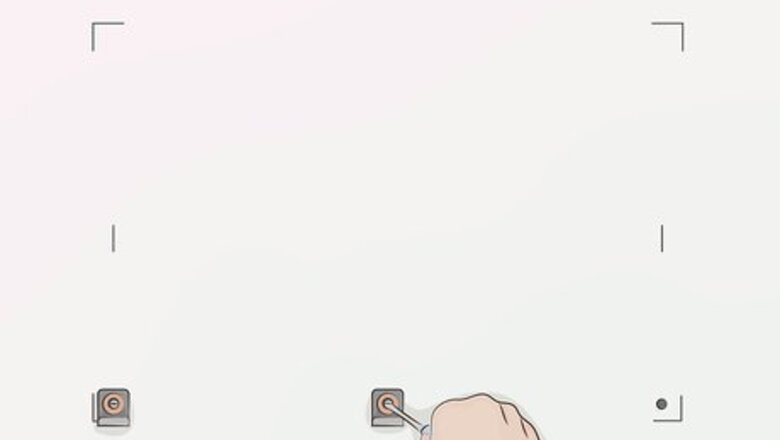
views
Mounting with Clips
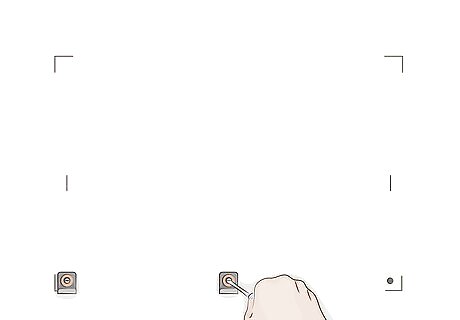
Mark the spot on the wall where you want the mirror to hang. Place the mirror against the wall in your desired position. Using a pencil, mark around the top and bottom corners. Take the mirror off the wall and place out of the way. This step will be easier with the help of another person who can hold the mirror in place while you make the markings. Clips are best for small frameless mirrors. If you are hanging a large mirror, use J-channels or Z-clips in place of regular clips, which can support more weight. EXPERT TIP Peter Salerno Peter Salerno Installation Expert Peter Salerno is the owner of Hook it Up Installation, a professional installation company, which has been hanging art and other objects around Chicago, Illinois for over 10 years. Peter also has over 20 years of experience installing art and other mountable objects in residential, commercial, healthcare and hospitality contexts. Peter Salerno Peter Salerno Installation Expert There are a number of different ways you can hang frameless mirrors. Peter Salerno, the owner of Hook It Up Installation, says: "One simple way to hang a frameless mirror is with clips. You just put two on the bottom, one on each side, and one on the top. You can also install a track system and mount them so the opening is roughly the height of the mirror, then tip the mirror into place. Typically, it's a good idea to put a little mirror mastic on the back of something like that for added security. You can also buy hardware that will make the mirror look like it's floating out from the wall, which looks really cool."
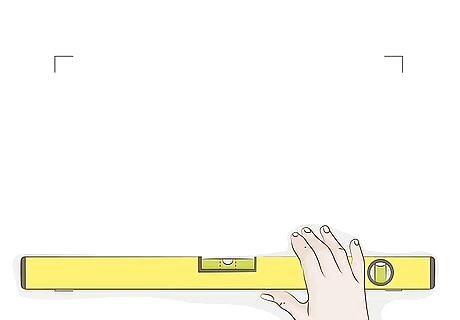
Use a level to make sure the mirror will hang straight. Based on the corner markings you made, use a spirit level to draw straight lines across the wall where the top and the bottom edges of the mirror will go. To use a spirit level, look at the bubble in the tube. If it is equally spaced between the two black center lines, then your edge is straight. If it slides off to one side, adjust the angle of the level until the bubble sits in the center.
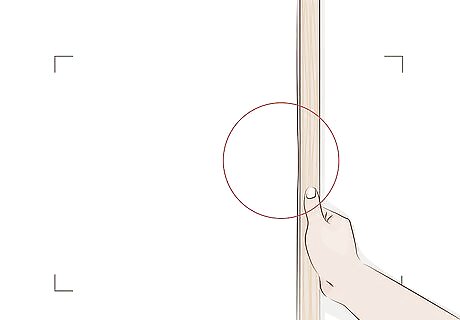
Double check that the wall is flat. Clipping a mirror too tightly against a bumpy wall can cause it to shatter. To locate bumps, slide a straight-edged board that is longer than the mirror itself over the wall. A yardstick is a good option, but if that’s too short, try a straight piece of 1 inch (2.5 cm) x 3 inches (7.6 cm) lumber. It will rock back and forth over a bump. Mark these spots with a pencil and sand them down. Power sanders are the simplest and quickest method. You can also use sandpaper wrapped around a wood block.
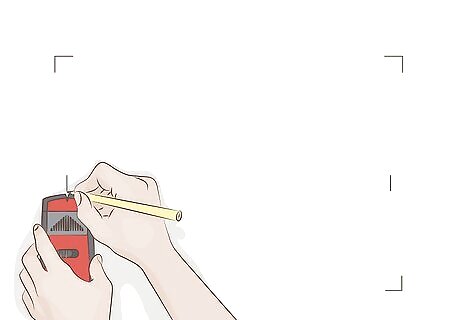
Locate and mark the studs in the wall. Studs are the evenly-spaced wooden support beams that can be found behind most interior walls in homes. Slide an automatic stud finder along the wall to find the studs. With a pencil, mark the outside edges of each stud in the area where you plan to hang the mirror. If you don’t have a stud finder, you can approximate the location of the studs by tapping on the wall. Taps between studs will sound more hollow, while taps over studs will sound more solid. If the mirror is positioned so it falls squarely in between studs, consider shifting its location so at least one clip can be screwed into a stud.
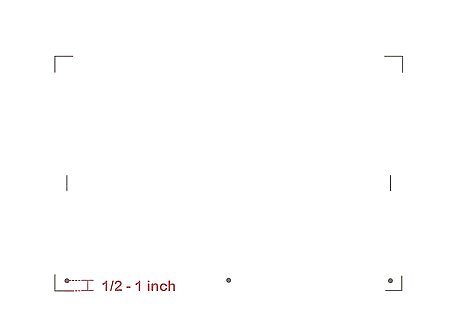
Mark where you plan to install the bottom mirror clips. Depending on the width of your mirror and the number of clips you have, space them out evenly. The mirror manufacturer may have recommendations about how to position the clips most effectively. Using a pencil, make a dot where the screw will go for each clip. Make sure to align the bottom edge of the clip with the line you drew marking the bottom edge of the mirror. The markings for the pilot holes will fall ⁄2 inch (1.3 cm) to 1 inch (2.5 cm) above the line, depending on the size of the clips.
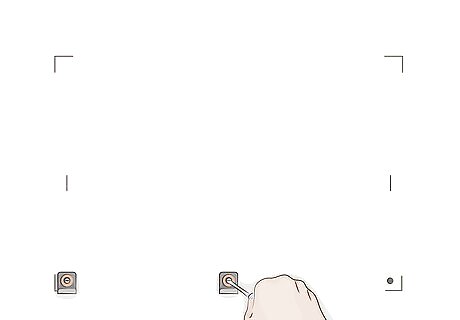
Drill pilot holes and install the bottom clips on the wall. Using a power drill, drill holes in the locations you marked. If any of the pilot holes do not fall on top of a stud, tap in a plastic wall anchor with a hammer until it is flush with the wall. Place a clip over each pilot hole and screw it into the wall with a screwdriver or drill. Make sure you're using the right clips. Bottom clips are typically made up of a single U-shaped piece of material, while top clips are composed of two L-shaped pieces.
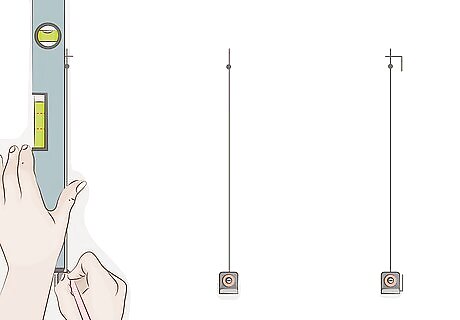
Mark where you plan to screw in the top clips. Using a spirit level, draw a line vertically upwards from each bottom clip until it intersects with the line for the top edge of the mirror. Line the top edge of the top clip up with this point. Mark where the pilot hole should be drilled. Similar to the bottom clips, the pilot holes should fall ⁄2 inch (1.3 cm) to 1 inch (2.5 cm) below the top line.
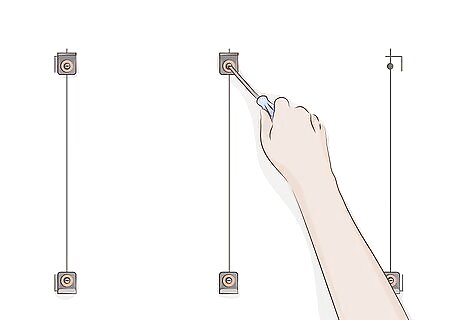
Drill the pilot holes and screw the top clip brackets into place. If any of the holes are not positioned over a stud, insert wall anchors into the drywall until their lips are flush with the drywall. Unscrew the two parts of the top clip. The larger piece is the bracket—screw each of these into place on the wall.
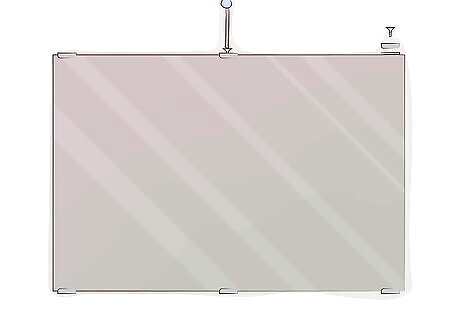
Screw on the rest of the top clips to secure the mirror against the wall. Slide the mirror into the bottom clips. Carefully, tilt the mirror back so it rests flush against the wall. Fit the other pieces of the top clips into the top brackets and screw them together just enough to firmly hold the mirror in place.
Attaching with Adhesive
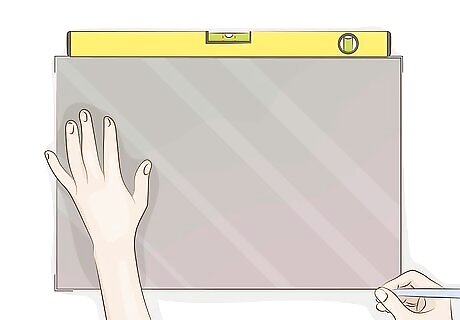
Mark where you want the mirror to hang using a pencil. Hold the mirror against the wall in your desired position and mark the top and bottom corners using a pencil. Use a level to ensure that the mirror will not hang crooked. Parallel to the lines you've drawn but about 1 inch (2.5 cm) inside, stick 4 pieces of painter’s tape to the wall. The painter's tape marks the area where the mirror will be glued to the wall. Keep in mind that adhesive is a more permanent solution. It will damage your wall and likely your mirror if you try to remove it once it has been glued on.
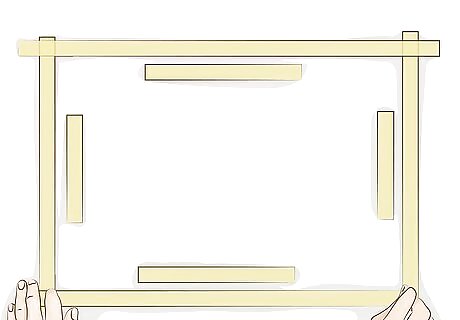
Mark the area where the mirror will be glued to the wall with painter's tape.

Prime the area for adhesive. Many household paints contain additives that make it easier to clean but harder for adhesives to attach and form a strong bond. Sand away the paint until you get down to the drywall. Wipe off any dust. Then, coat the sanded area with a primer and let dry.
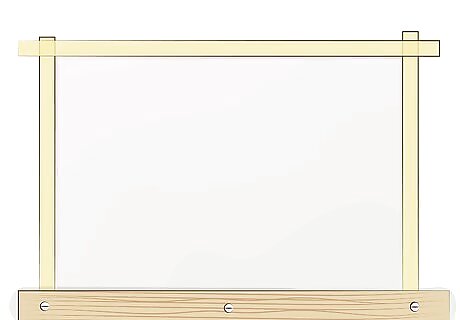
Install a temporary wooden brace to support the mirror’s bottom edge. Remove the painter’s tape from the wall. Drill a piece of plywood into the wall so that its top is flush with the marked bottom edge of the mirror. If you’re installing the mirror in the bathroom, you can often use the countertop backsplash as a bottom support rather than installing a temporary brace.
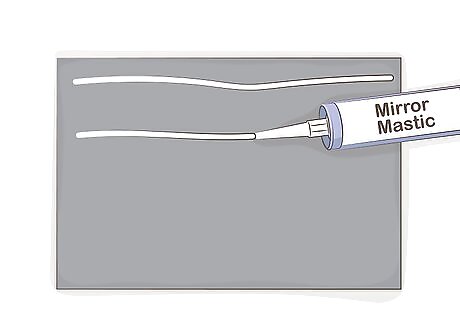
Apply the adhesive to the back of the mirror. You'll need a high-grade adhesive known as mastic, which is often used in construction. The manufacturer will recommend the ideal pattern for application. Make sure to keep the mastic at least 2 inches (5.1 cm) from the edge to prevent it from squeezing out when you press it against the wall. Make sure you are using a type of mastic that is specifically intended for mounting mirrors. Using another kind could damage the silver coating on the back of the mirror.
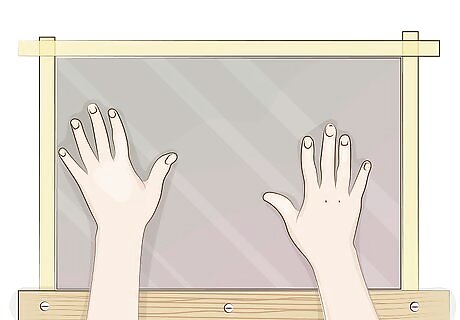
Stick the mirror firmly to the wall. Rest one corner of the mirror on the support and keep the other slightly lifted. Press it against the wall. As the mastic comes into contact with the wall, allow the lifted corner to slide back down and rest against the support, spreading the glue across the wall surface. Use a clean paint roller to press the mirror firmly into the wall. For additional security, stick pieces of painter’s tape to the top corners of the mirror until the glue dries fully. Allow the mastic to dry for about 24 hours.
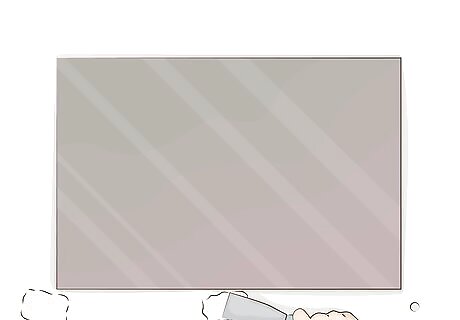
Remove the wooden brace and repair any holes. Once the mastic has dried completely, use a drill to unscrew the wooden brace from the wall. Using a putty knife, spread spackling across any holes left over from drilling the brace into the wall. Sand the spackling smooth and paint over it with a color that matches the wall's existing paint. Peel off any leftover painter’s tape. Make sure to check your local building codes. Some areas may require clips in addition to adhesive when mounting mirrors.


















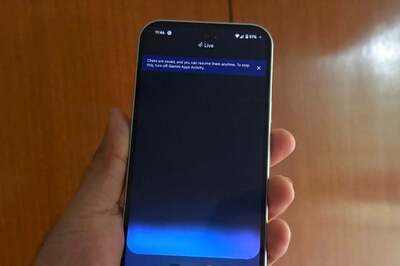
Comments
0 comment